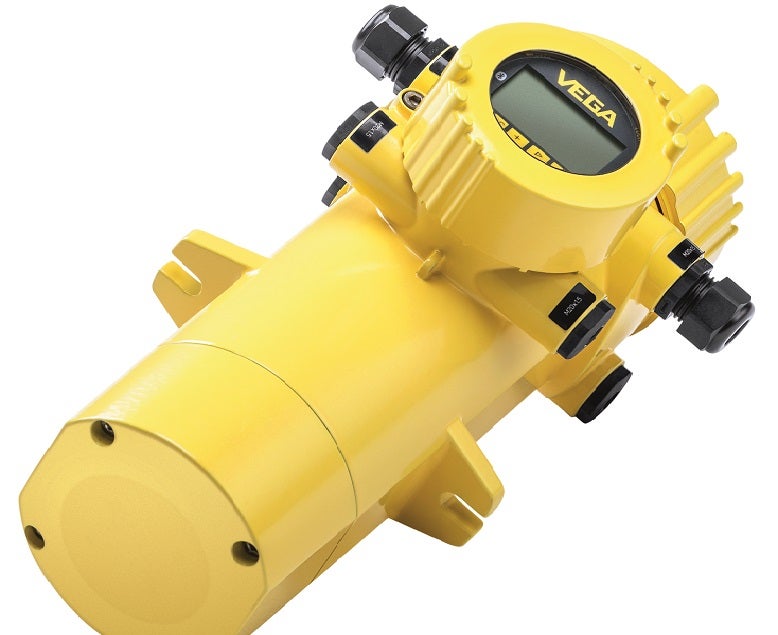
Mining slurry is a combination of ore and minerals with water, and as water has a density of one, any materials that you add increase the density. The purpose of nuclear measurement devices for mines is to monitor this density to ensure that it remains at an optimal level for pumpability, maximised throughput, and avoiding damage and wear.
Vega managing director John Leadbetter spoke with Mining Technology to explain how radiometric density measurement works, and how mines and governing bodies ensure safety when dealing with radioactive materials.
“Nuclear material is housed in a big steel holder at one side of the pipe that is being used to pump slurry,” Leadbetter explains. “The holder has a small hole that allows the radiation to transmit outwardly through the wall of the pipe, through the running material, and through the other side of the pipe. The amount of radiation is then picked up by a nuclear detector. We know when we calibrate the units that we will receive a certain amount of energy if water is running through the pipe, and when you start thickening up the material running through the pipeline, that absorbs some of that energy. This means that the thicker the material, the more energy it absorbs, and less energy is detected at the other side.”
Leadbetter continues, “What metallurgists and process engineers do is control the thickness or the density of the material based on the feedback measurements taken in the field. It is their job to ensure that this mining slurry is pumped efficiently. The thicker the slurry, the harder it is to pump, so they have to keep it at an optimum level. This level also determines how much minerals and ore they are pumping, so usually they will want to keep it between two set points. In doing that, they are running the mine efficiently, they are not wearing out their pumps, and they are maximising the throughput through these pipes.”
Vega’s nuclear density measurement devices
Amongst Vega’s comprehensive range of process instrumentation for the mining industry is the Minitrack 31, a radiation-based sensor for non-contact density measurement of liquids and bulk solids that is retrofitted to pipelines. The VEGASOURCE 31 is a source container that houses the caesium 137 radioactive isotope. The empty housing is ordered from Germany and usually weight around 65g, depending on the size of the caesium that is required for the application. When the product is shipped containing the radioactive isotope, it is very closely monitored and sent through an authorised loading centre and stored in locked areas.
“Mines already know that they need nuclear density measurement devices when they approach us,” Leadbetter adds. “They hand over information such as pipe wall thickness, material and diameter, which we input into a programme with a specifically designed formula to calculate requirements such as source size and mounting bracket sizing. These devices are never off the shelf, they’re always made to order.”
Safety matters
The only personnel that are licenced to work on nuclear devices are radiation safety officers. These safety officers must undergo a government course to ensure that they understand the effects of radiations, as well as safety and licensing procedures. As a heavily governed area, the government keeps record of everything, including serial numbers, the amount of source at any given site, the amount of energy that is being transmitted, and the half-life of the radioactive material (typically, each source with have a 15-year life span). The amount of radiation at each site is monitored and limited for safety, and any mine that wishes to expand and increase the amount of radioactive material at their site will be required to follow licensing procedures.



